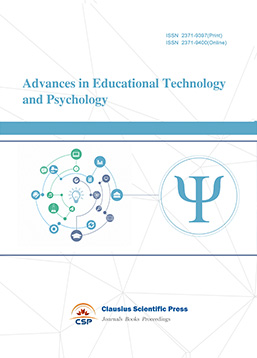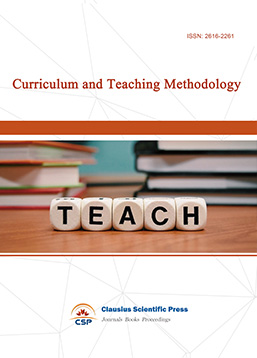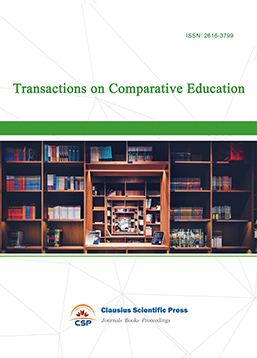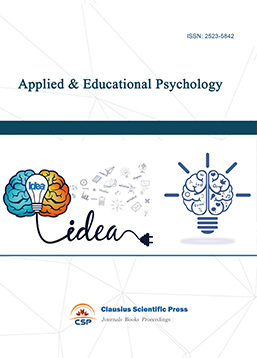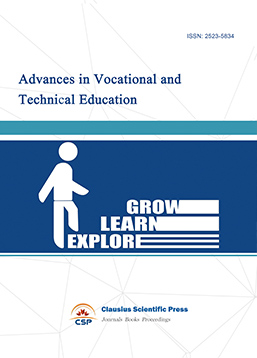An Analysis on Cultural Immersion in English Teaching in Universities
DOI: 10.23977/aduhe.2024.060520 | Downloads: 34 | Views: 1005
Author(s)
Yang Liu 1, Hong Liu 2, Yijia Hong 2
Affiliation(s)
1 School of English Studies, Tianjin Foreign Studies University, Tianjin, 300204, China
2 Beijing Institute of Technology, Bryant University-BITZH Programme, Zhuhai, 519088, China
Corresponding Author
Hong LiuABSTRACT
The culture immersion should be brought into English as a Foreign Language (EFL) teaching in Chinese universities. Understanding English culture can help Chinese students deepen the understanding of the English language and communicate more effectively in English. This paper introduces the concept of culture and links culture with language teaching. In literature review, the author describes historical status and current reform of English education in Chinese universities as the background of this research. Then, this paper explains the reasons for integrating culture with English teaching in Chinese universities. Strategies for integrating culture with English teaching are studied to provide feasibilities for this practice. The author generalizes difficulties in culture immersion in the EFL classroom. In the last part, recommendations are made for practice. The aims of this paper are not only to identify the importance of culture immersion to Chinese university students, but also to explore feasible ways for improving cultural immersion in university education.
KEYWORDS
Cultural Immersion, University Education, English TeachingCITE THIS PAPER
Yang Liu, Hong Liu, Yijia Hong, An Analysis on Cultural Immersion in English Teaching in Universities. Adult and Higher Education (2024) Vol. 6: 137-141. DOI: http://dx.doi.org/10.23977/aduhe.2024.060520.
REFERENCES
[1] Levin, L. (1972). Comparative Studies in Foreign Language Teaching. Almovist & Wiksell Stockholm.
[2] Brooks, N. (1975). The analysis of language and familiar cultures. In R. C. Lafayette (Ed.), The Cultural Revolution (pp.70-72). Lincolnwood, IL: National Textbook Company.
[3] Seelye, H. N. (1993). Teaching culture: Strategies for intercultural communication. Lincolnwood, IL: National Textbook Company.
[4] Ellis, R. (1994). The study of second language acquisition. Oxford: Oxford University Press.
[5] Hadley, A. O. (2000). Teaching language in context (3rd ed.). Boston: Heinle & Heinle.
[6] Rivers, W. M. (1968). Psychologist and the foreign language teacher. Chicago: The University of Chicago Press.
[7] Standards for Foreign Language Learning: Preparing for the 21st Century. (1996). National Standards in Foreign Language Education Project.
[8] Hu, W. Z. (1995). First step of research on intercultural communication. Second language and second language teaching, 1, 3-6.
[9] Wang, F.Y. (1994). Culture and language. Beijing: Second Language Education and Research Press.
[10] Zheng, M. (1998). Structural-poststructural approach: language, culture, criticism. Beijing: Tsinghua University Press.
[11] Donald J. C. (2009). Interaction Involvement: A Cognitive Dimension of Communication Competence. Communication Education 30 (2): 109-121.
[12] Seelye, H. N. (1976). Teaching culture: Strategies for foreign language educators. Lincolnwood, IL: National Textbook Company.
[13] Anderson, J. (1993). Is a communicative approach practical for teaching English in China? System, 21(4), 471-480.
[14] Bosuwon.T. (2017) Social Intelligence and Communication Competence: Predictors of Students' Intercultural Sensitivity. English Language Teaching 10 (2): 136-149.
[15] Hird, B. (1995). How communicative can English language teaching language teaching be in China? Prospect, 10(3), 21-27.
[16] Huang, Z. (1999). The impact of globalization on English in Chinese universities. AILA Review 13, 79-88.
[17] Shen, C. (1989). Language and culture: Two goals of FL teaching in China. Australian Review of Applied Linguistics, 12(2), 36-60.
| Downloads: | 22183 |
|---|---|
| Visits: | 1246125 |

 Download as PDF
Download as PDF